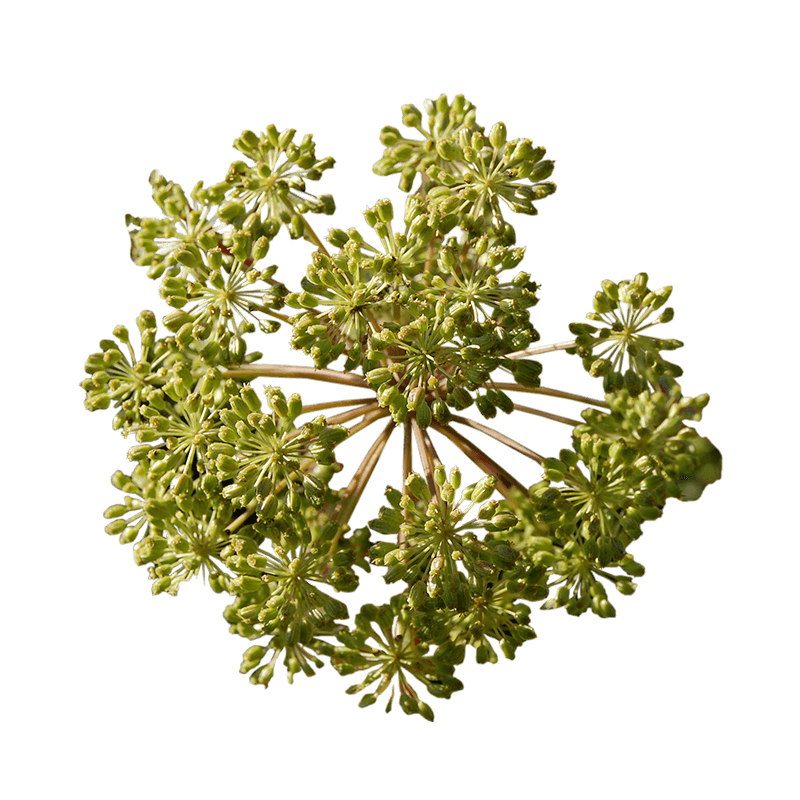Angelica Archangelica
Angelica archangelica L. – Apiaceae

Angelica archangelica is an aromatic, biennial plant, up to 2m tall. The stems are upright, round, the leaves are large and incised, the flower is a shield, while the fruits are flat. In our preparation, we used angelica root as a medicinal part of the plant. Angelica root originates from Iceland, but today it can also be found in Northern and Eastern Europe, Siberia and North America.
One of the ingredients of the plant is essential oil. In addition to essential oil, angelica also contains: b-phellandrene, d-3-carene, but also a whole series of lactones, as well as a high content of coumarin. The calming effect of this plant on the gastrointestinal system originates from coumarin. It acts as a stomachic (improves digestion) and spasmolytic (relaxes the smooth muscles of the digestive tract). In addition to the mentioned actions, coumarin also has the role of a mild sedative, facilitates sleep and reduces the feeling of tension.

The genus contains about 50 species. Our areas are suitable for the growth of two species, namely: medicinal angelica (Angelica archangelica) and forest angelica (Angelica sylvestris). They grow on moist soil and within light forests, in meadows, along rivers and streams.
As an aromatic, bitter stimulant, angelica is important for supporting the health of the digestive system, neutralizing gas and reducing bloating. Angelica root is antibacterial (prevents the growth of bacteria, Clostridium difficile, Clostridium perfringens, Enterococcus faecalis) and antifungal (prevents the growth of fungi, Candida albicans). It is used as a soothing ingredient for many digestive disorders, relaxes the smooth muscle of the digestive tract, but acts as an anti-inflammatory (reduces the inflammatory reaction) and an antioxidant (neutralizes free radicals).
